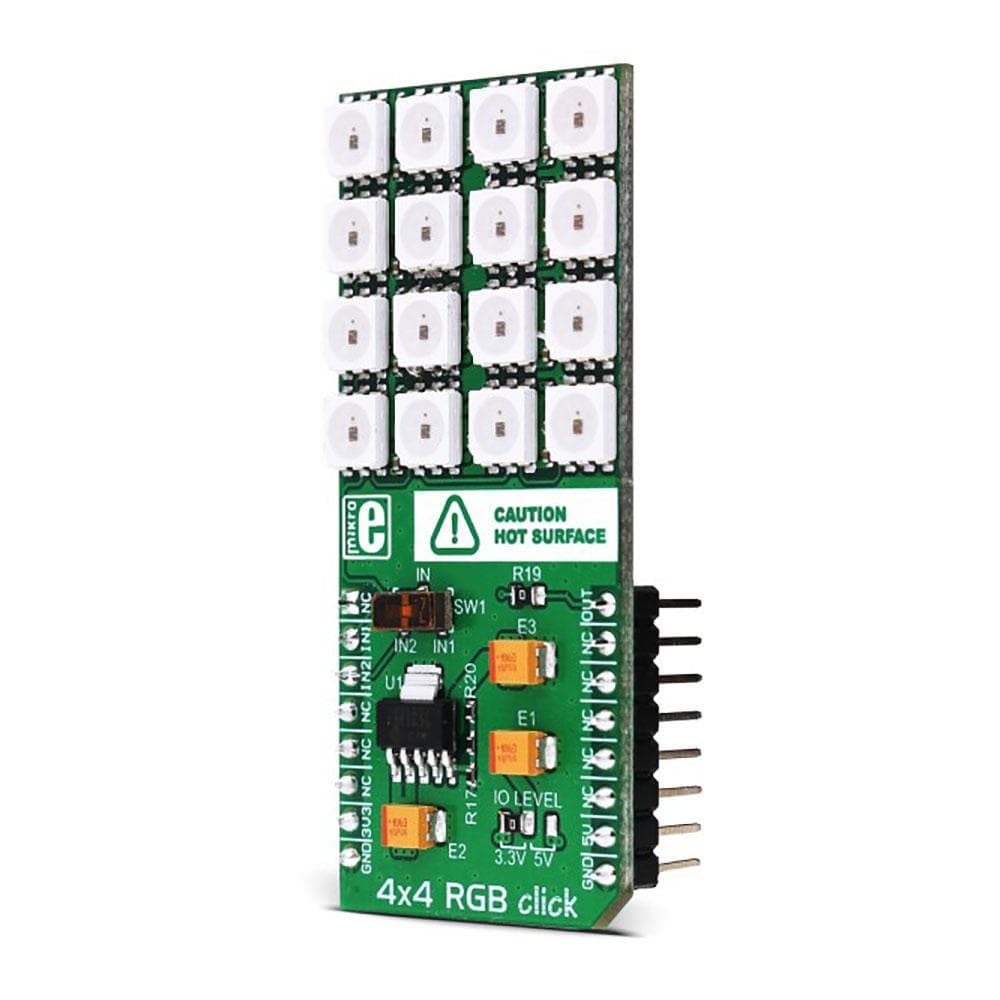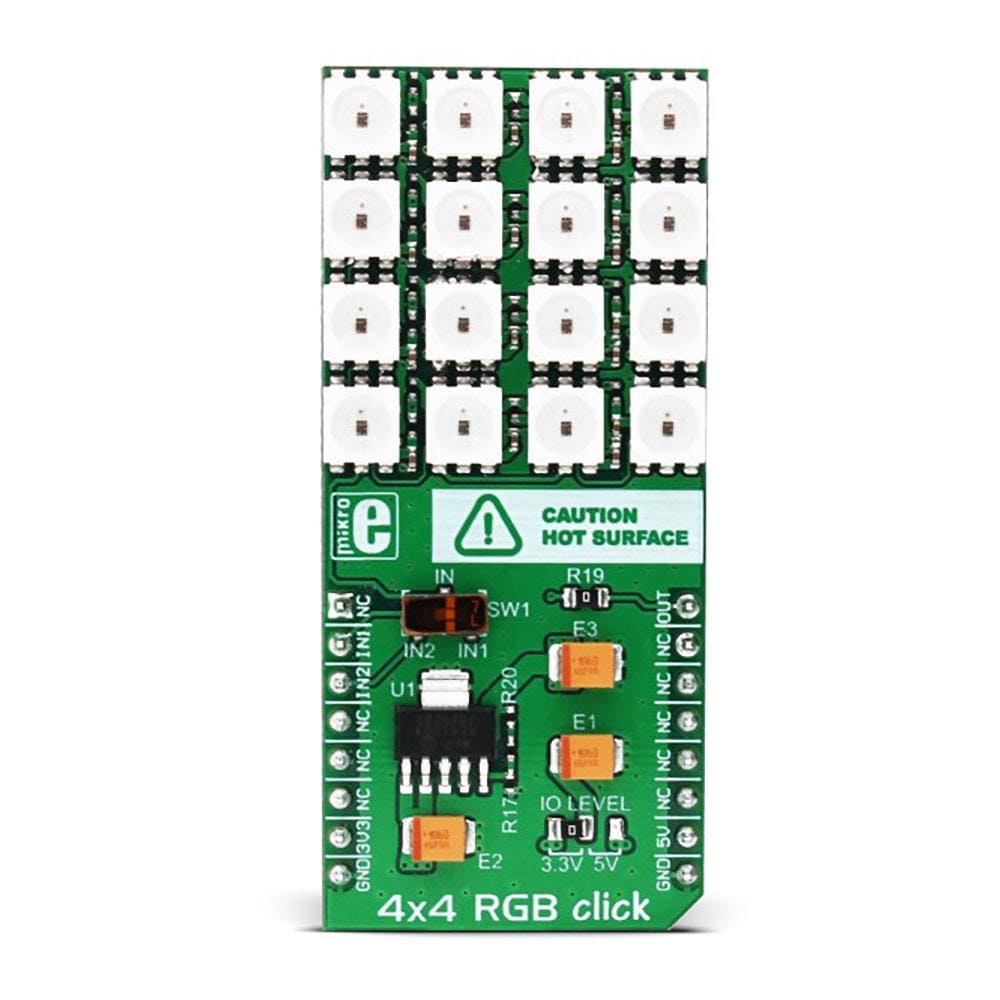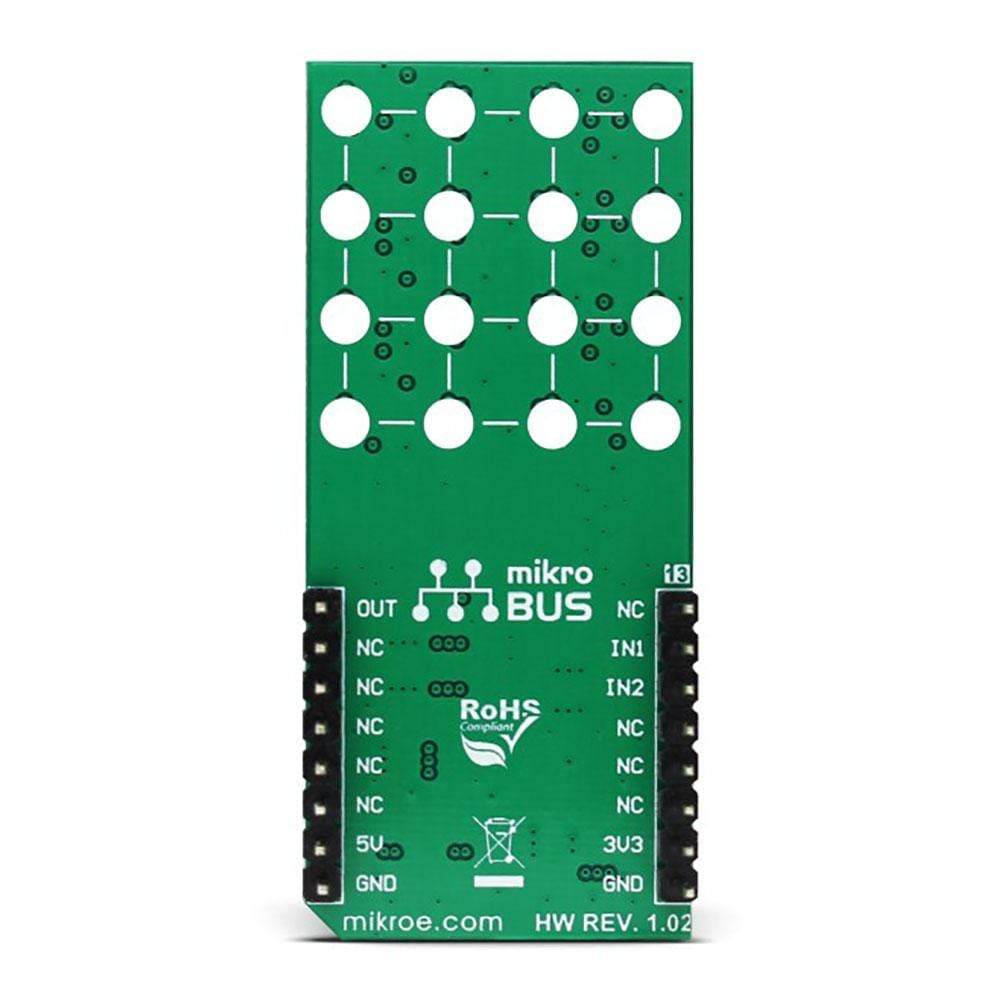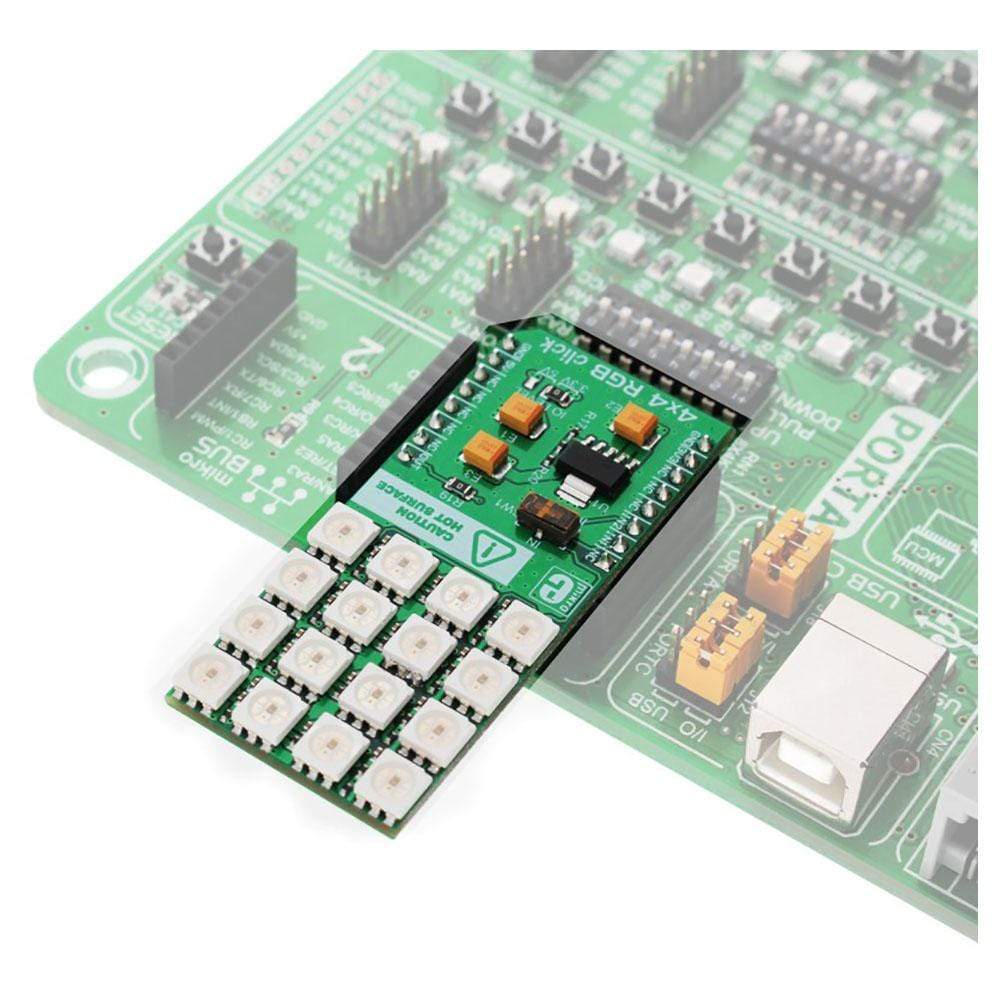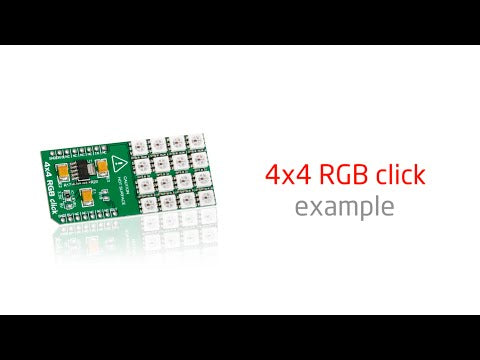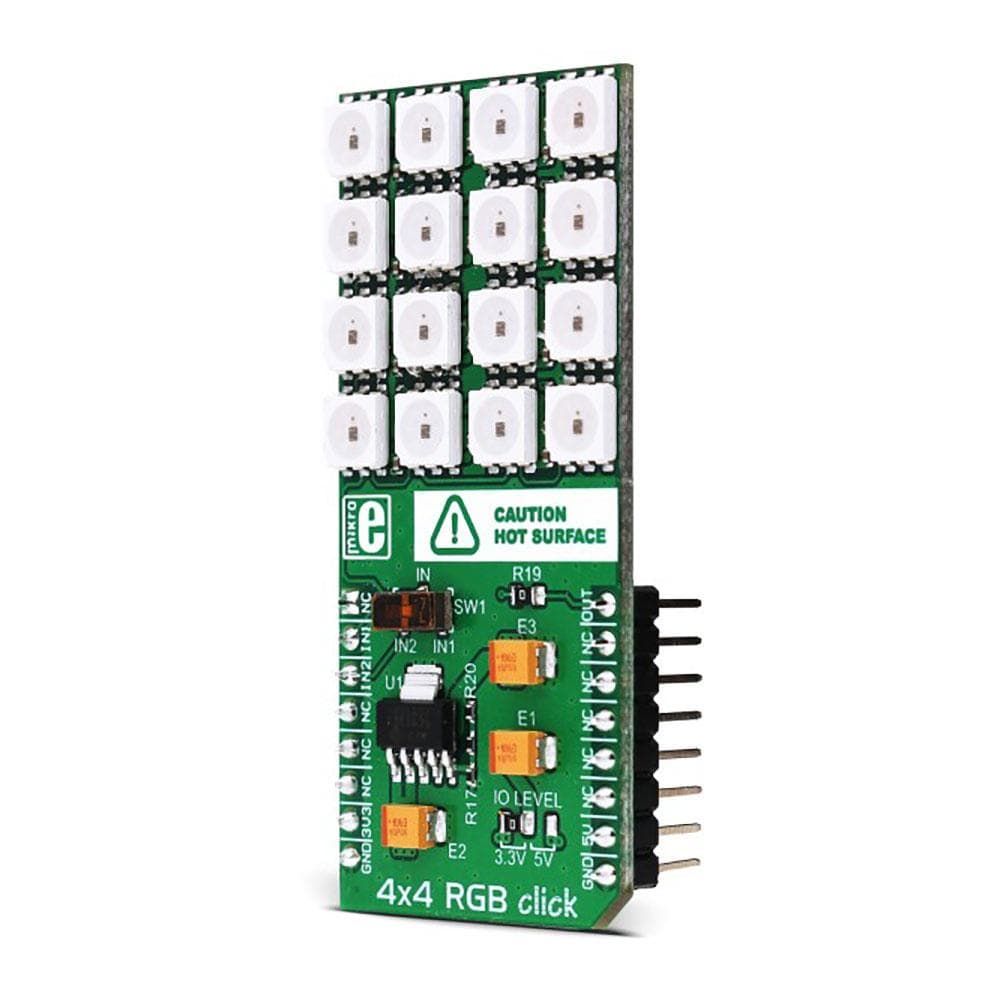
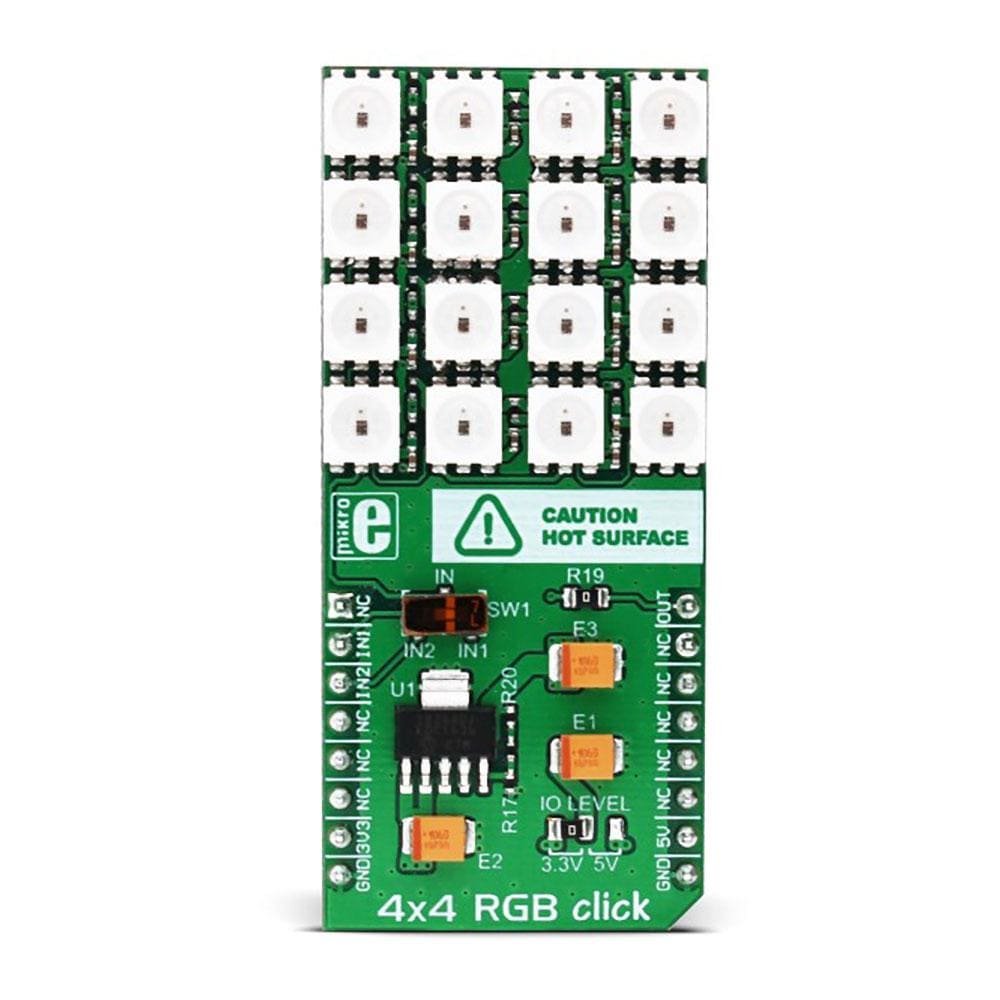
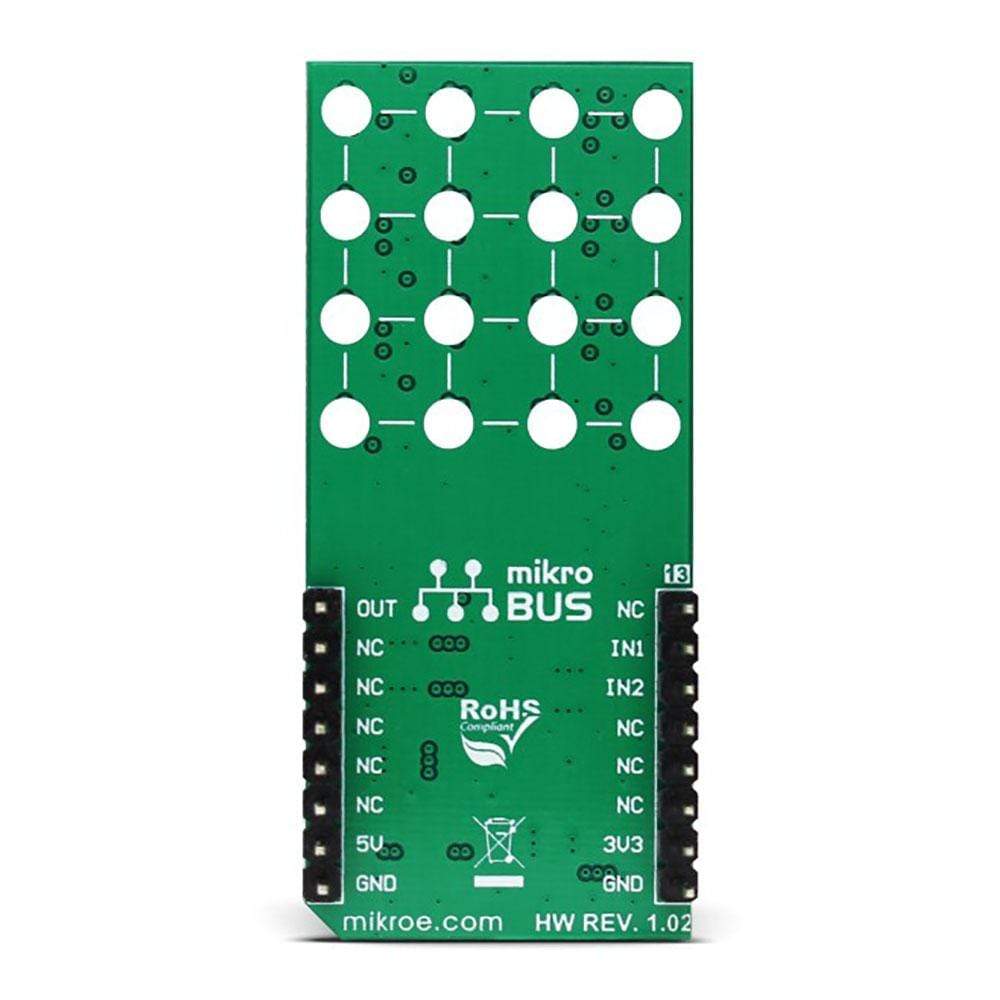
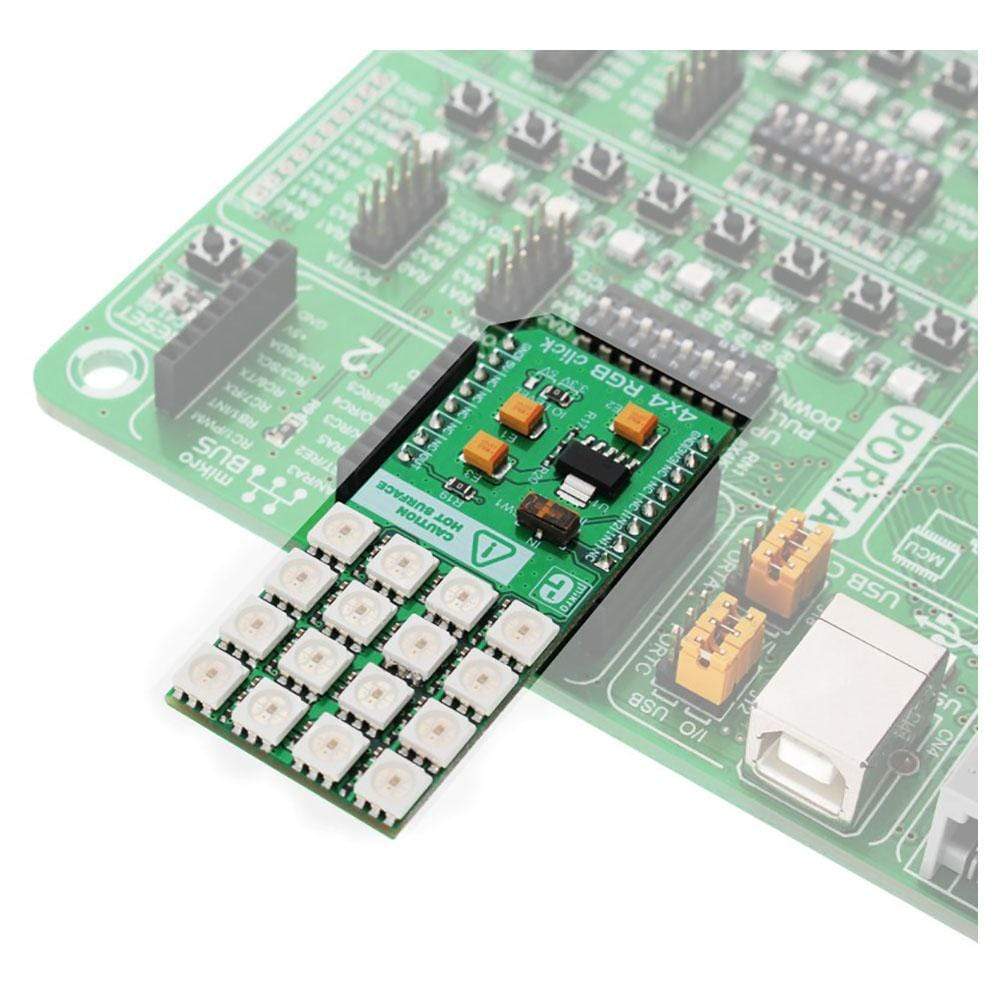
Overview
The 4x4 RGB Click Board™ is an add-on board that helps the user to add a colourful RGB LED matrix to the design. This accessory board comes equipped with a matrix of 16 very bright WS2812 RGB LEDs and an MCP1826 low dropout regulator. Each of these 16 LEDs further comprises three single coloured LEDs (Red, Green and Blue), and a control chip. Put together, there are a total of 48 individual LEDs in 4x4 RGB Click Board™. The control circuit and RGB chip have been integrated into a package of 5050 components to keep pixel points in complete control. 4x4 RGB Click Board™ features a jumper (zero Ω resistor) for setting the I/O logic level. It is by default soldered in the 3.3V position but can make use of either a 3.3V or 5V power supply. The LED matrix is connected to the target board microcontroller through the MikroBUS RST pin.
The 4x4 RGB Click Board™ can be used to create animations that can be scrolled on a computer screen. It is also usable for producing spellbinding displays of colourful graphics on electronic billboards, signs, and similar interfaces.
.
Downloads
Das 4x4 RGB Click Board™ ist eine Zusatzplatine, mit der der Benutzer dem Design eine farbenfrohe RGB-LED-Matrix hinzufügen kann. Diese Zusatzplatine ist mit einer Matrix aus 16 sehr hellen WS2812 RGB-LEDs und einem MCP1826 Low-Dropout-Regler ausgestattet. Jede dieser 16 LEDs umfasst außerdem drei einfarbige LEDs (Rot, Grün und Blau) und einen Steuerchip. Zusammen enthält das 4x4 RGB Click Board™ insgesamt 48 einzelne LEDs. Der Steuerkreis und der RGB-Chip wurden in ein Paket aus 5050 Komponenten integriert, um die Pixelpunkte vollständig unter Kontrolle zu halten. Das 4x4 RGB Click Board™ verfügt über einen Jumper (Null-Ω-Widerstand) zum Einstellen des E/A-Logikpegels. Es ist standardmäßig in der 3,3-V-Position verlötet, kann aber entweder eine 3,3-V- oder eine 5-V-Stromversorgung verwenden. Die LED-Matrix ist über den MikroBUS RST-Pin mit dem Mikrocontroller der Zielplatine verbunden.
Mit dem 4x4 RGB Click Board™ können Sie Animationen erstellen, die auf einem Computerbildschirm abgespielt werden können. Sie können damit auch faszinierende Darstellungen farbenfroher Grafiken auf elektronischen Werbetafeln, Schildern und ähnlichen Schnittstellen erstellen.
.
| General Information | |
|---|---|
Part Number (SKU) |
MIKROE-1881
|
Manufacturer |
|
| Physical and Mechanical | |
Weight |
0.034 kg
|
| Other | |
Country of Origin |
|
HS Code Customs Tariff code
|
|
EAN |
8606015076430
|
Warranty |
|
Frequently Asked Questions
Have a Question?
Be the first to ask a question about this.

